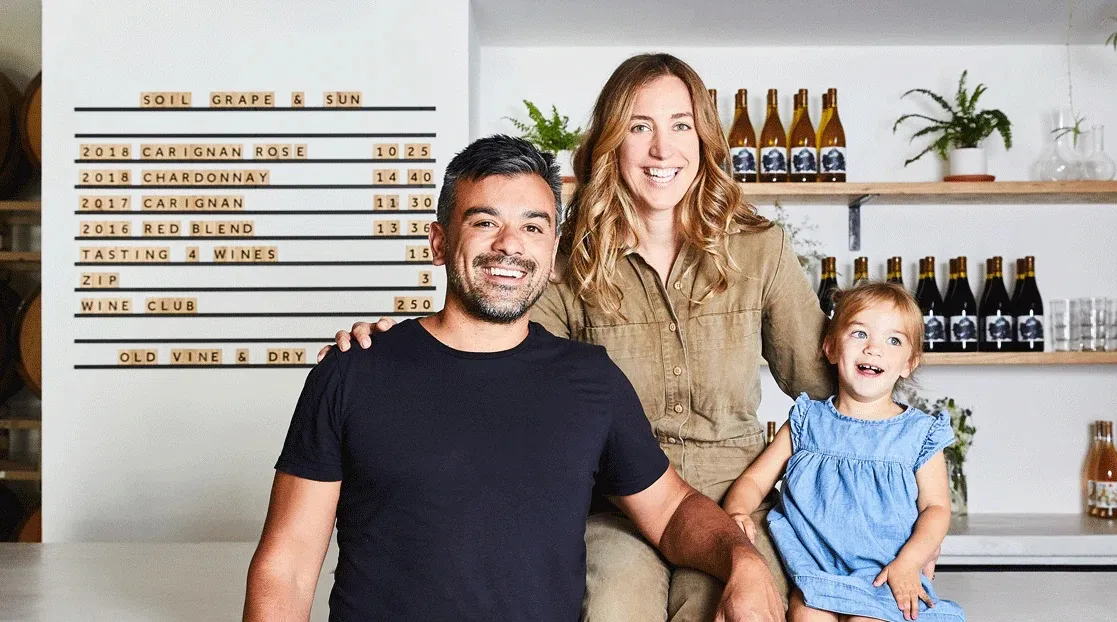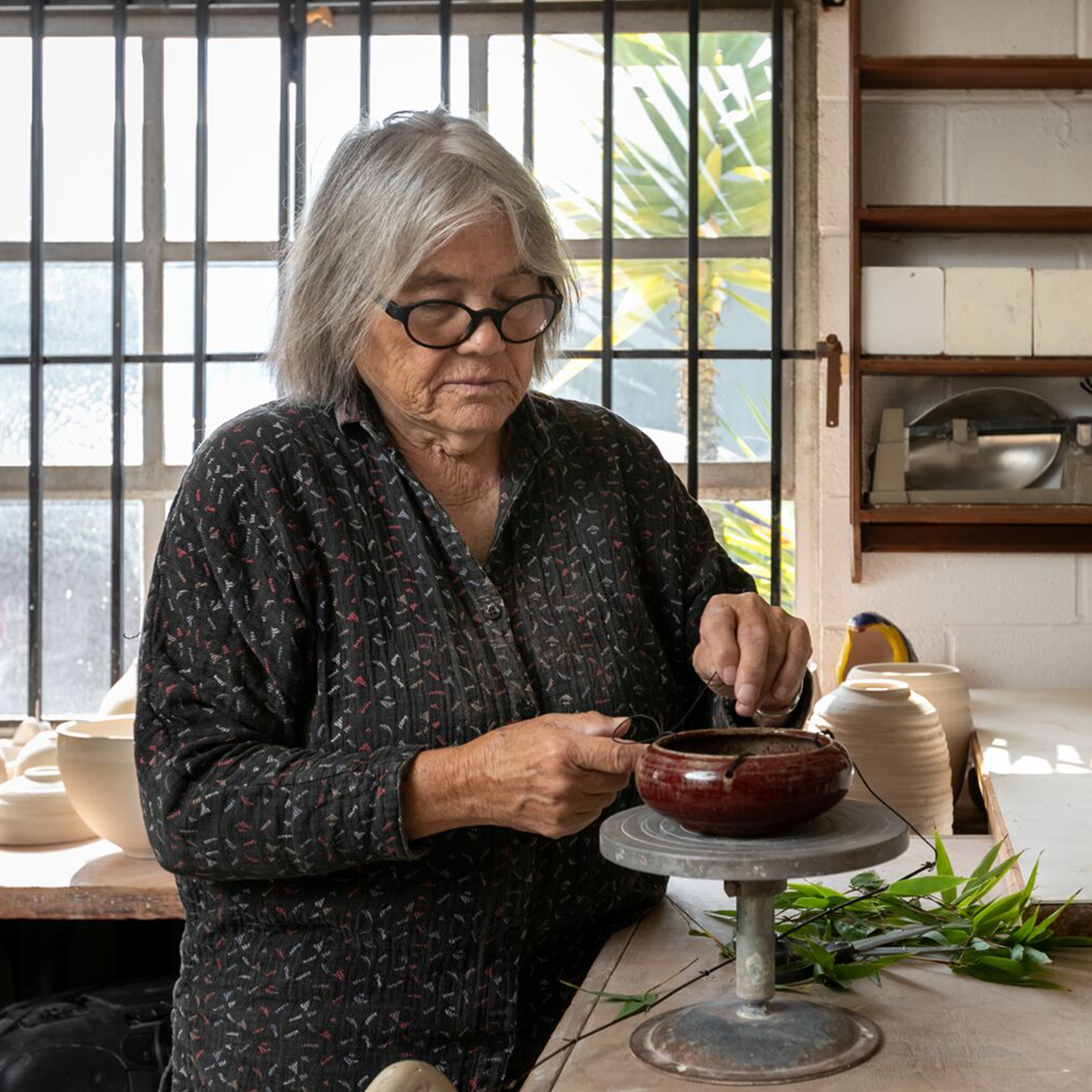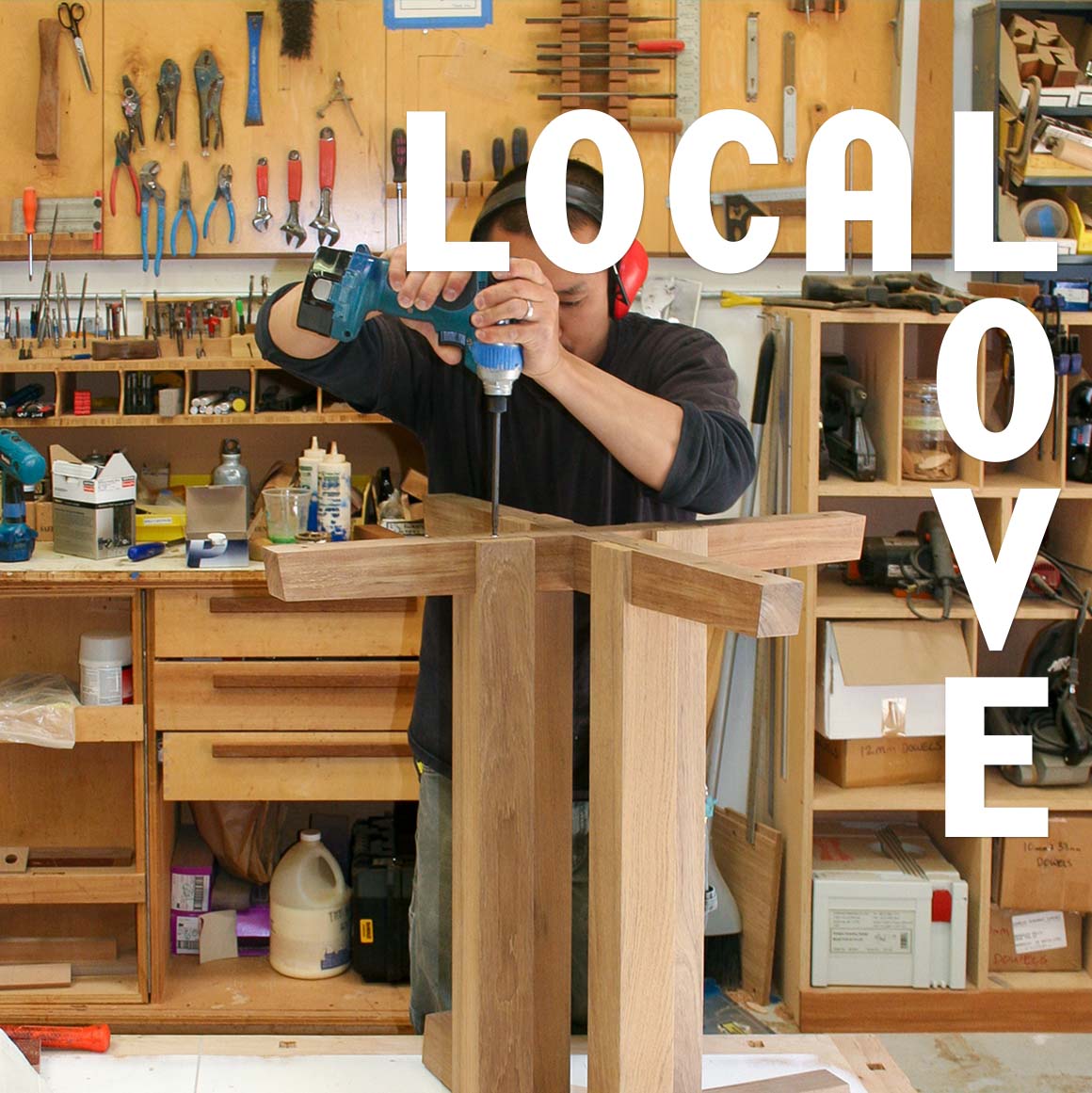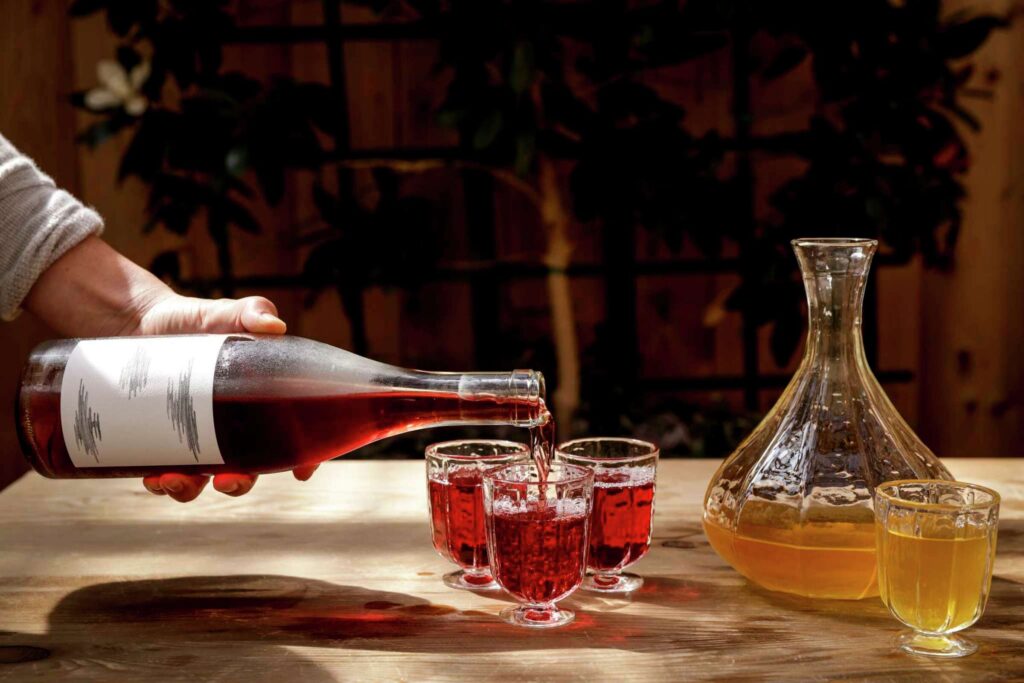
Credit: Brontë Wittpenn / The Chronicle
September 20, 2022
SAN FRANCISCO CHRONICLE – A pioneer of the Bay Area’s natural wine movement, Broc Cellars is no stranger to challenging the status quo. The Berkeley winery’s latest endeavor has nothing to do with yeast or sulfur, but it has placed Broc in the ring of another one of wine’s most contentious debates: Does the size and shape of glassware actually matter?
For years, wine lovers have tirelessly debated the scientific merits of wine glass design. Many believe the size and shape can optimize aromas and flavors — that the slightest change in slope or tapering at the rim can be customized to pair with specific grape varieties. Leading wine glass manufacturer Riedel sells hundreds of different glasses.
But Broc’s owners don’t think drinking wine needs to be so complicated. In 2020, the winery partnered with Berkeley designer Rafi Ajl to create a handblown vessel that defies modern conventions.
Traditional wine glasses are tall and wide and often light and fragile. A wide base and narrower rim is said to help concentrate the wine’s aromas when it’s swirled. And a stem is typically thought of as necessary to prevent one’s hand from warming up the wine. But Broc’s glasses are hefty, small, low-profile and stemless. Much less likely to be knocked over, spill and break, they’re designed for easy, casual and spirited imbibing — like natural wines themselves — versus the customary swirling, sniffing and scrutinizing.
The glasses fit into a growing trend in natural wine culture of forgoing classic stemware in favor of something more simple and universal. “They make wine a little bit more approachable. It takes wine literally off the pedestal,” said Bridget Leary, who co-owns Broc with Chris Brockway. “It’s a more comfortable, fun way to enjoy wine.”
Despite the $55 per glass price point — notably higher than the cost of Broc’s wines, which typically go for about $30 a bottle — the glasses have struck a chord with the winery’s customers. In less than two years, Broc has sold nearly 2,000 glasses and even expanded the line to include a decanter ($150). They’ve been so popular that the winery used to have trouble keeping them in stock.
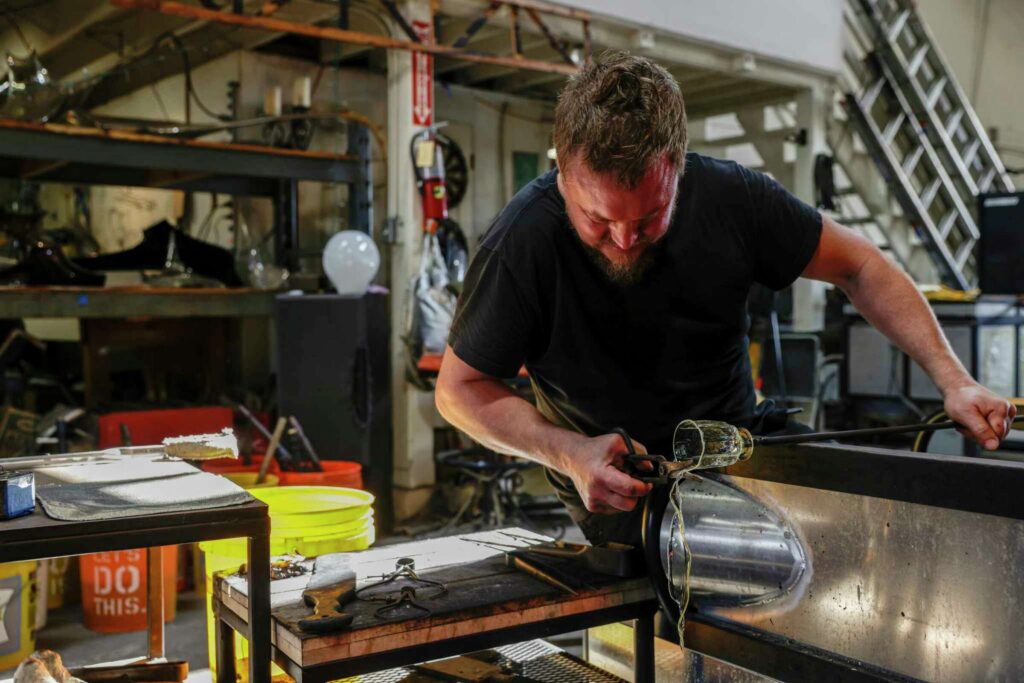
They are still more affordable than most wine glasses in the high-end market. A delicate, thin-stemmed Zalto, for example, costs at least $70. Leary insists there’s “no real markup” and that the price reflects the labor-intensive process it takes to make them.
Broc’s other partner in the project, Oakland’s Glow Glass Studio, can only produce about 55 glasses in an eight-hour day, as the ancient art takes incredible care and attention to detail. Handblown glassware is increasingly difficult to find domestically, Leary said, and it’s not cheap to make.
“Glass requires big things: big electricity, big glass and big heat,” said designer Ajl. It requires “furnaces, hundreds or thousands of pounds of melted glass and it takes five to seven years to learn the craft.”
The inspiration for the glassware came during the pandemic lockdown, when Leary and Brockway got creative with glassware while drinking wine at home. There was one set that they used the most: a pair of small and thick cocktail glasses they purchased in Japan.
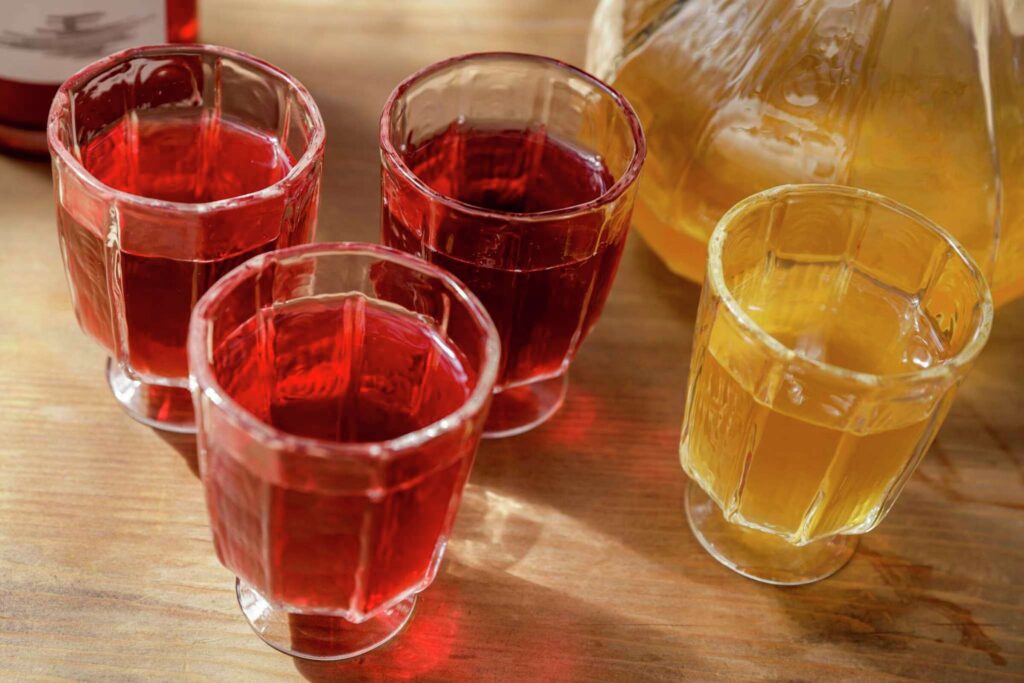
A toddler in the house partly drove this glass preference. “The last thing we wanted was this really tall, stemmed, fragile, breakable wine glass,” said Leary, who was also partial to a sturdy spirits glass she purchased from Ajl. Specializing in handcrafted furniture and home goods for his company the Long Confidence, Ajl works in a studio down the street from Broc. One night, about “half a bottle of wine in,” Leary emailed him, proposing a collaboration.
Throughout the six-month design process, Ajl presented roughly 20 sketches and then a dozen cardboard prototypes. The design they finally landed on is 3.5 inches tall and 2.5 inches wide; small, straight and multi-edged, it looks more like a fancy water glass than a wine glass.
Ajl’s goal was to create a stunning vessel that could enhance the everyday drinking experience while keeping it somewhat casual, just like Broc’s often crushable style of wines. These are fresh, fruit-driven and lower in alcohol — meant to be opened sooner than later, not years after aging. Leary especially likes to use the Broc glasses for sparkling wine, orange wine, whites and chillable reds.
There isn’t exactly any science connecting compact, low-profile glassware to the enjoyment of natural wines, but this style has nonetheless become a common fixture within the Bay Area’s natural wine scene. They can be found nearly filled to the rim — another traditional wine glass faux pas, as this prevents the ability to swirl — at trendy newcomers like Bar Part Time, Snail Bar, Rose Pizzeria and Shuggie’s.
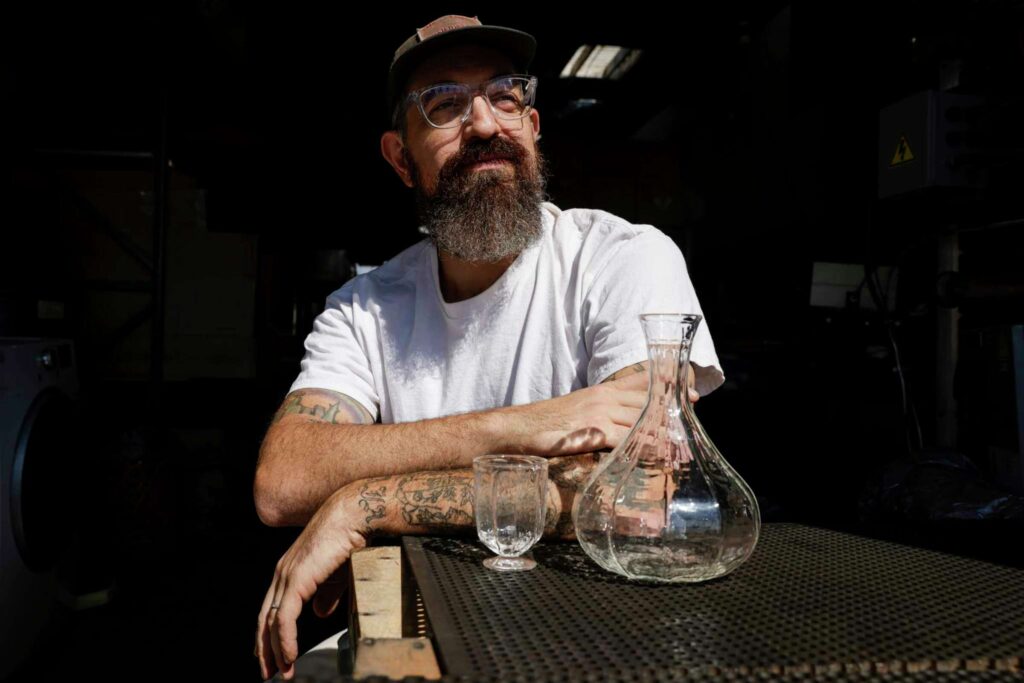
“There are so many barriers to entry in wine, and glassware is one of those. To put everything in one glass and make it uncomplicated and unfussy is kind of refreshing,” said Shuggie’s co-owner Kayla Abe. “There’s not a ton of baggage attached to these types of glasses, whereas I think people can often get really caught up in choosing the perfect glass for the perfect type of wine.”
Alexis Rorabaugh, co-founder of Rose Pizzeria in Berkeley, said she wanted the glassware to match the restaurant’s informal vibe, especially as most of their bottles are priced around $40. The only drawback: Some customers assume they’re getting stiffed on the pours. Rorabaugh said staff always poured 5 ounces but have had to “top it off a little bit more” lately after receiving some complaints about it online.
Last year, Broc’s glassware became a valuable subsidiary of their business. Like many California wineries, Broc produced significantly less wine during the 2020 vintage due to smoke from wildfires and was “running out of wines to sell,” said Leary.
Then last November, Ajl designed a matching decanter. Leary wanted to fill a hole in the decanter market, something that fit in between stodgy, unoriginal decanters and elaborate, delicate ones that you “don’t even want to use.”
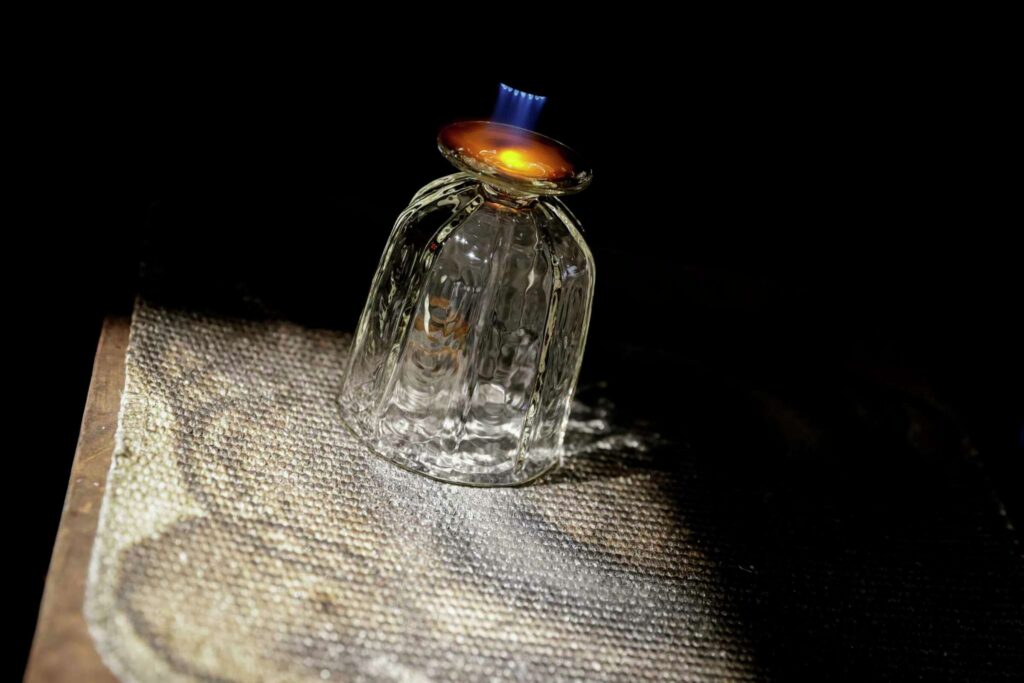
Now, Ajl is working on the next wine accessory for Broc: a wine stopper, which they’re hoping to launch before the holidays. (For functionality purposes, this one won’t be glass.)
Other businesses, like Berkeley tea company Leaves and Flowers, have tapped Ajil to design glassware as well.
“I love that this can expose more people to design, to these beautiful things,” said Ajl. “I just think if more beauty was available in people’s everyday experiences, the world actually would be a better place.”
Jess Lander is a San Francisco Chronicle staff writer. Email: jess.lander@sfchronicle.com Twitter: @jesslander

